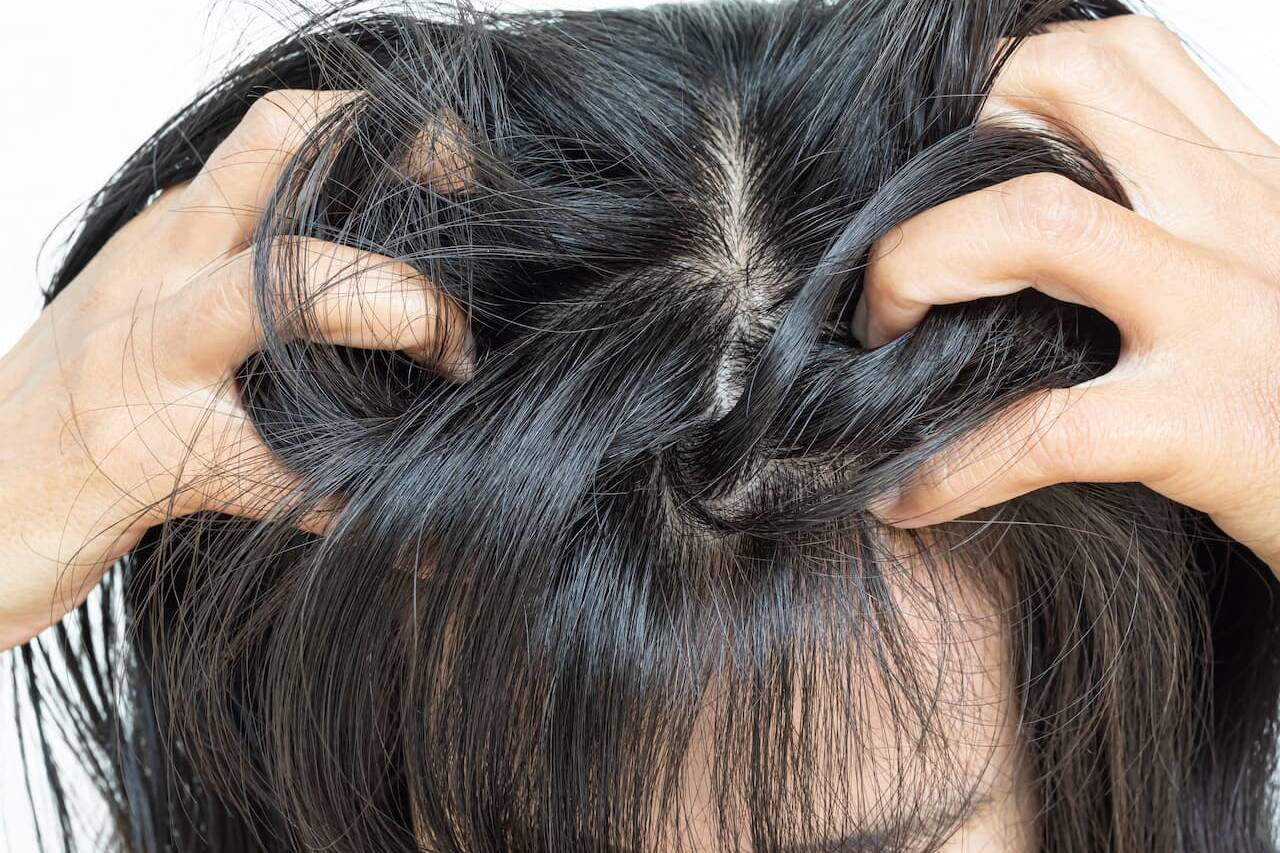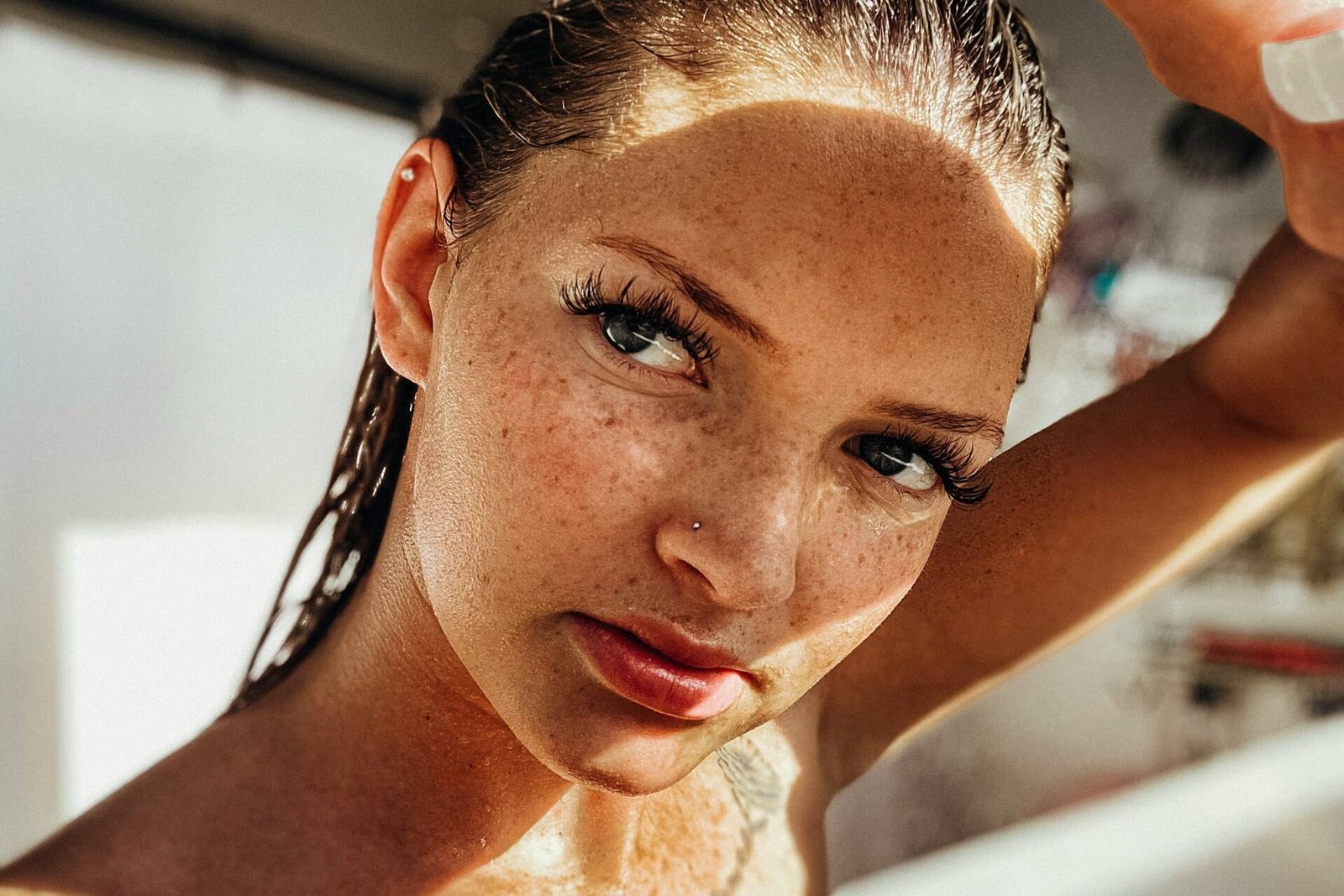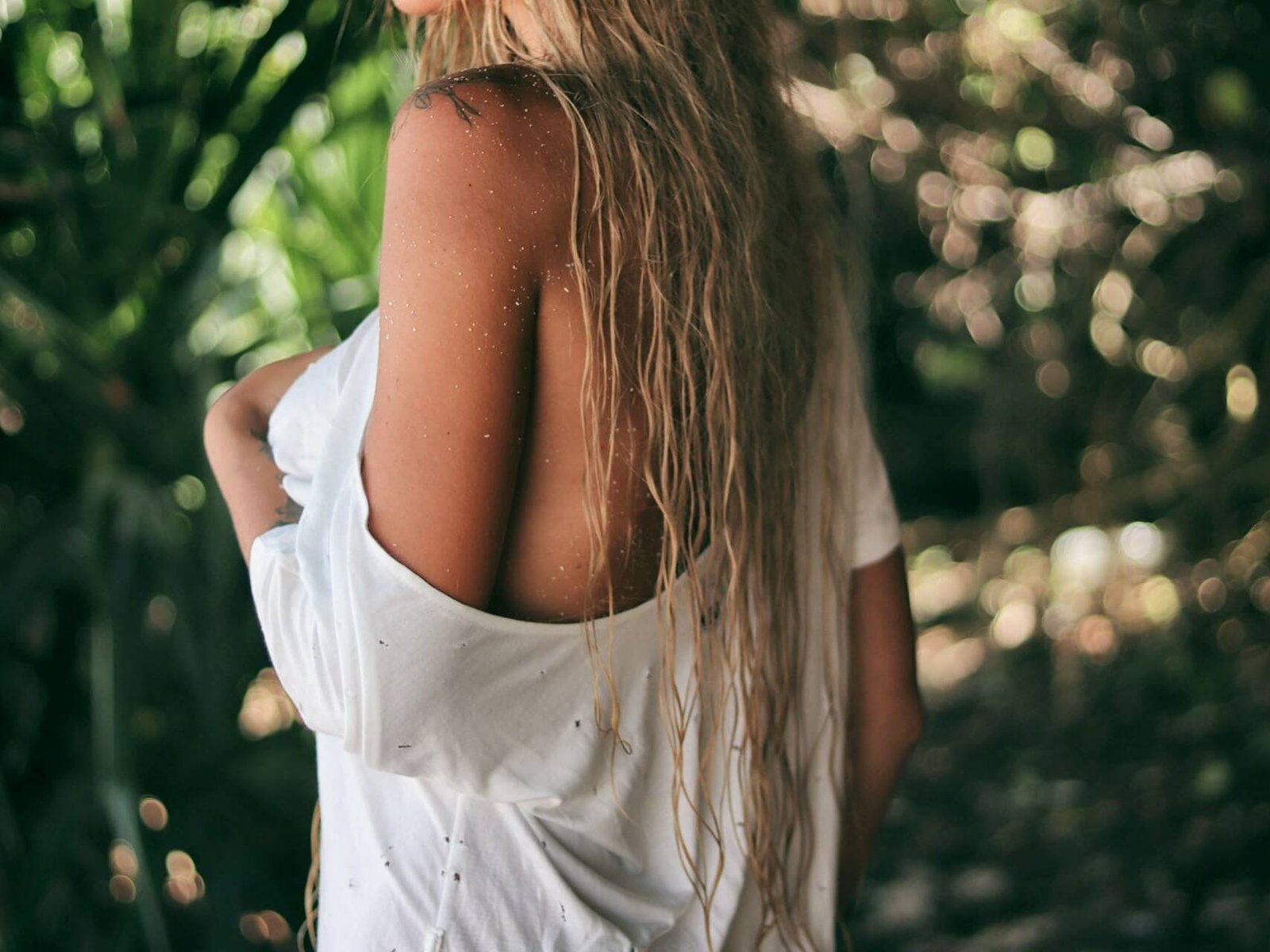But why exactly does hair color fade, and more importantly, what can you actually do about it? Let’s dive into the real science behind color fading and the most effective ways to keep your color looking salon-fresh for longer.
In this Article
The 7 Major Causes of Colour Fading
back to top
1. Water Exposure (Especially Hot Water)
Every time you wash your hair, the water causes the hair cuticle to slightly open. When this happens, small colour molecules can escape from the hair shaft.
What the research shows: A 2018 study in the International Journal of Trichology found that washing coloured hair with water at temperatures above 105°F (40.5°C) accelerated colour fading by up to 37% compared to washing with cooler water.
Quick fix: Switch to lukewarm or cool water when rinsing your hair. The cooler temperature helps keep the cuticle closed, trapping colour molecules inside.
2. Harsh Cleansing Agents
Conventional shampoos often contain strong cleansing agents like sodium lauryl sulfate (SLS) and ammonium lauryl sulfate (ALS) that can strip color along with dirt and oil.
What the research shows: A comparison study by the Journal of Cosmetic Science demonstrated that hair washed with sulfate-based shampoos showed 26% more colour loss after 12 washes compared to sulfate-free formulas.
Quick fix: Switch to a gentle, sulfate-free shampoo specifically formulated for coloured hair, like Colour Saviour Shampoo. Its mild cleansing agents preserve colour while still thoroughly cleaning the hair.
3. UV and Environmental Exposure
Sunlight is essentially bleaching your hair colour every time you step outside without protection.
What the research shows: Research published in the Journal of Photochemistry and Photobiology found that UVA and UVB rays not only fade artificial hair colour but actually break down the natural pigment structure of the hair itself, causing double damage to coloured hair.
Quick fix: Use UV-protective products or wear a hat when spending extended time outdoors. Look for hair products containing UV filters or natural UV-protective ingredients like aloe vera (a key ingredient in Colour Saviour Shampoo).
4. Heat Styling Without Protection
That flat iron or blow dryer isn’t just damaging your hair’s structure—it’s literally causing your colour to evaporate.
What the research shows: According to a study from the Journal of Cosmetic Science, coloured hair exposed to heat styling at 450°F without protection lost almost twice as much colour as protected hair, with red dyes showing the most dramatic fade.
Quick fix: Always use a heat protectant before styling, and try to keep hot tools below 350°F whenever possible. Allow your hair to air-dry partially before blow-drying to minimise heat exposure.
5. Hard Water Mineral Deposits
If you live in an area with hard water, minerals like calcium, magnesium, and iron are attaching to your hair and affecting how light reflects off the strands, making color appear duller.
What the research shows: Research from the International Journal of Cosmetic Science found that hair washed in hard water regions showed higher levels of mineral buildup, which not only made colour appear less vibrant but actually prevented new colour from properly adhering during colouring treatments.
Quick fix: Consider installing a shower filter or using a clarifying treatment once weekly to remove mineral buildup. Follow with a colour-safe shampoo like Colour Saviour that helps mitigate mineral damage with its gentle cleansing formula.
6. Improper pH Balance
Hair colour is most stable in a slightly acidic environment (pH 4.5-5.5). When you use products that are too alkaline, they can lift the cuticle and allow colour molecules to escape.
What the research shows: A 2020 study in the Journal of Cosmetic Dermatology demonstrated that hair products with a pH higher than 6.0 caused the cuticle to swell, resulting in 21% more colour loss compared to products formulated with a pH between 4.5-5.5.
Quick fix: Check the pH of your hair products (many colour-safe formulas will advertise their pH level). Colour Saviour Shampoo is specially formulated with lactic acid to maintain the optimal pH balance for colour preservation.
7. Porous Hair Structure
If your hair is damaged from chemical processes or environmental factors, it’s more porous—meaning it both accepts color more readily but also loses it faster.
What the research shows: Research from the Journal of the Society of Cosmetic Chemists found that highly porous hair lost up to 45% more color during regular wash cycles compared to hair with intact cuticles.
Quick fix: Incorporate bond-building or protein treatments into your routine to temporarily repair porosity issues. Look for ingredients like wheat protein (found in Colour Saviour Shampoo) that help smooth the cuticle and lock in colour.
How to Test If Your Current Routine Is Causing Fading
back to top
Want to know if your current hair care routine is contributing to premature colour fade? Here are three simple at-home tests:
The White Towel Test
After washing your hair with your current shampoo, gently towel-dry with a white towel. If you see color transfer, your shampoo may be stripping your colour.
The pH Strip Test
Mix a small amount of your shampoo with water and test it with a pH strip (available at most drugstores). For coloured hair, you ideally want products with a pH between 4.5-5.5. Anything higher can contribute to colour fading.
The Glass of Water Test
Fill a clear glass with water and add a drop of your shampoo. If it forms a lot of bubbles that take a long time to dissipate, it likely contains strong surfactants that can strip colour.
The Science of Colour Protection
back to top
To understand how to protect your colour, it helps to understand how hair colour works in the first place.
Hair dye molecules work by penetrating through your hair’s cuticle (the outermost layer of overlapping cells) and lodging in the cortex (the middle layer). Permanent dyes create larger colour molecules inside your hair that are too big to easily wash out. Semi-permanent dyes mostly coat the cuticle with some limited penetration.
The key to colour protection is two-fold:
- Keeping the cuticle flat and sealed to prevent colour molecules from escaping
- Creating a protective barrier that shields hair from environmental damage
Key Ingredients That Actually Preserve Colour
back to top
Not all “colour-safe” ingredients are created equal. Here are the scientifically-proven ingredients to look for:
Aloe Vera Leaf Juice
Beyond its soothing properties, aloe creates a light protective film on the hair shaft that helps lock in color molecules while providing natural UV protection.
Wheat Protein
This plant-derived protein temporarily fills in gaps in the cuticle, creating a smoother surface that prevents color from escaping. It also improves hair’s elasticity, reducing breakage.
Betaine
Derived from sugar beets, betaine is a gentle humectant that draws moisture into the hair while helping the cuticle remain flat and sealed. This keeps color molecules locked inside while preventing the dryness that can make color look dull.
Colour Saviour Shampoo harnesses all three of these powerful ingredients in its gentle formula specifically designed to preserve colour vibrancy while thoroughly cleansing.
Your Step-by-Step Colour Protection Routine
back to top
To maximise your colour’s lifespan, follow this science-backed routine:
Days 1-3 After Colouring
- Wait at least 48 hours before first shampooing if possible
- When you do wash, use cool water and a colour-safe formula like Colour Saviour Shampoo
- Apply a leave-in treatment with UV protection
Weekly Maintenance
- Limit washing to 2-3 times per week maximum
- Use cool or lukewarm water only
- Apply a colour-protective treatment once weekly
- If you live in a hard water area, use a chelating treatment once weekly followed by deep conditioning
Before Heat Styling
- Apply a heat protectant that specifically mentions color protection
- Use the lowest effective temperature setting
- Consider colour-depositing products for touch-ups between salon visits
FAQs: Your Colour Fading Questions Answered
back to top
Which hair colours fade the fastest?
Red dyes contain the largest colour molecules, which don’t penetrate the hair shaft as deeply as other colours. Research shows red shades can fade up to 30% faster than other colours. Blues and purples in fashion colours are also particularly prone to fading.
Does swimming really affect hair colour?
Yes, both chlorine and salt water can significantly impact colour. Chlorine is particularly damaging as it’s designed to oxidise contaminants—including your hair colour molecules. Always wet your hair with fresh water before swimming and use a swim cap for extra protection.
Will colour-depositing products help with fading?
Colour-depositing products can help refresh tone between salon visits, but they’re not a replacement for proper colour care. They work best when used in conjunction with colour-protective shampoos like Colour Saviour Shampoo that prevent the original colour from fading in the first place.
How much does water quality really affect my colour?
Significantly. A 2019 study found that people living in areas with hard water experienced up to 40% faster colour fading than those with soft water systems. If moving isn’t an option, a shower filter can reduce mineral content by up to 70%.
Does how often I wash my hair really matter that much?
Every time you wash your hair, some colour molecules are lost—even with the gentlest products. Limiting washing to 2-3 times weekly can extend your color’s life by weeks or even months, especially for fashion colours and reds.
Remember, the investment you make in your gorgeous colour deserves to be protected. By understanding the science behind colour fading and implementing these research-backed strategies, you can enjoy vibrant, head-turning colour for significantly longer between salon visits.
What colour-fading challenges have you faced? Share in the comments below, and our colour experts will respond with personalised advice!
Related Articles
June 29, 2025
The Complete Guide to Post-Workout Hair Washing
Why Most People Are Washing Their Hair Wrong? You've invested time in…
June 7, 2025
How to Tell If You Have a Sensitive Scalp: 7 Warning Signs You Shouldn’t Ignore
Does your scalp feel uncomfortable after washing your hair? Do certain products…
May 17, 2025
Why Your Water Quality Might Be Sabotaging Your Hair Shine (And What to Do About It)
Is your shower secretly stealing your hair's shine? The water flowing through…



